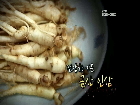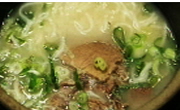This study set out to investigate the life and imaginative geography of Baekam Kim Reuk with his collection of poems 「Yimyeongrok」 he wrote when he was demoted to the Busa of Gangreung during the early days of Gwanghaegun``s reign. On the second y...
http://chineseinput.net/에서 pinyin(병음)방식으로 중국어를 변환할 수 있습니다.
변환된 중국어를 복사하여 사용하시면 됩니다.
- 中文 을 입력하시려면 zhongwen을 입력하시고 space를누르시면됩니다.
- 北京 을 입력하시려면 beijing을 입력하시고 space를 누르시면 됩니다.

栢巖(백암) 金륵(금륵)의 삶과 「임영록(臨瀛錄)」에 나타난 심상지리 = A Study on the Life of Baekam Kim Reuk and Imaginative Geography in His 「Yimyeongrok」
한글로보기https://www.riss.kr/link?id=A101962116
- 저자
- 발행기관
- 학술지명
- 권호사항
-
발행연도
2016
-
작성언어
-
- 주제어
-
KDC
800
-
등재정보
KCI등재
-
자료형태
학술저널
-
수록면
35-67(33쪽)
- DOI식별코드
- 제공처
-
0
상세조회 -
0
다운로드
부가정보
다국어 초록 (Multilingual Abstract)
This study set out to investigate the life and imaginative geography of Baekam Kim Reuk with his collection of poems 「Yimyeongrok」 he wrote when he was demoted to the Busa of Gangreung during the early days of Gwanghaegun``s reign. On the second year of his reign in 1610, Gwanghaegun decided to worship his birth mother Gongbin Kim, who had been dead for 30 years, granted her the title of Queen of Jasukdaningongseong, and gave an order to move her tomb to Seongreung. Kim Reuk submitted 「 Bongjajeonchusunghu Cheongjeongjinhabansagye」 discussing how his decision to worship Gongbin Kim and move her tomb would violated the decorum and insisting on the retraction of his decision. He was subsequently demoted to the Busa of Gangreung in June, 1610 and was dismissed from office and driven to the country in December the next year. His 「Yimyeongrok」 clearly shows his psychology shifting between the extreme ends of agony and transcendence. His mental images in the collection can be categorized into ① his yearning for a fairyland, ② his unchanged loyalty, ③ his complaints, and ④ his resignation. His mental images were replaced, symbolized, or represented in such words as ‘fairyland’, ‘plum blossom’, ‘single-heartedness’, ‘tears’, ‘Taoist hermit with miraculous powers’, and ‘the crane’. The clear manifestation of his psychological changes and symbols was the result of him reflecting the disharmony between his in and outside and his compulsive metaphors. ‘Jisubu’ and ‘Chaguigeoraesa’ offer some clues to understand his extreme psychological changes derived from his mental fatigue and wounds caused by the gap between his internal orientation and the confusion political situations during the reign of Gwanghaegun. For him, water represented by ‘Jisu’ was the imagery of ‘purity’, ‘moral training’, and ‘invariability’ and the medium of finding his way to the path of noble man. His Guigeoraesa displays an intersection between his lingering affection toward Seoul and his hope of returning to his hometown rather than his psychology of abandonment for eternal farewell.
동일학술지(권/호) 다른 논문
-
고려후기 除夜詩(제야시)의 작가와 제야시의 문학적 특질
- 한국문학언어학회
- 하정승 ( Jung Seung Ha )
- 2016
- KCI등재
-
- 한국문학언어학회
- 권채린 ( Chae Rin Kwon )
- 2016
- KCI등재
-
- 한국문학언어학회
- 김명훈 ( Myong Hoon Kim )
- 2016
- KCI등재
-
- 한국문학언어학회
- 김미영 ( Mee Young Kim )
- 2016
- KCI등재




 KCI
KCI KISS
KISS






